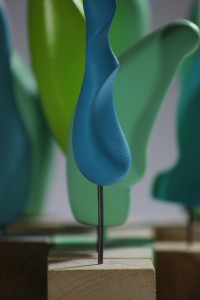What exactly is product design? In the first place, it is a traditional and at
the same time topical, innovative, and ever-changing discipline of applied
art. Whichever product you hold in your hand, from a computer mouse to
a glass to a steering wheel, their shapes and functional properties are
always the result of work of a designer or rather, a design team. The
designer’s task is not only to focus on the visual aspect that makes the
product attractive for a customer, but, equally important, to concentrate
on its practical features – that is why we talk about Applied Art. Using the
word Art is in no way overstated or exaggerated. How many times have
we stopped to look at sophisticated and classy cars or motorcycles? How
many times have we tried to pick out a piece of jewellery in a display
case? How many times have we played with a new cell phone or looked at
a new watch with great satisfaction? Even seemingly commonplace
products such as knife and fork or a paper packaging might be
unexpectedly sophisticated, and for a brief moment you may stop and
think back of the designer’s exquisite craftsmanship.
The Department of Product Design (earlier Designing Industrial Products)
has been at High School of Art and Design since 1986. Since then,
obviously, more than the name of the department has changed.
Traditional design and production of mock-ups, models and prototypes
was supplemented by computer-aided design, including the indispensable
3D modelling. The diversity of assignments has been maintained – from
small objects of daily use to packaging, to tools and machines, to means
of transport. Emphasis is put on students’ creativity. Together, while
working on projects we try to come up with novel approaches.
In the first academic year, the students’ focus is on studio skills, more
specifically on foundations of painting and drawing. In the second
academic year, more complex space compositions are included, such as
natural motifs or intersections of spatial structures. In these two years,
the students are taught figural drawing and traditional modelling
techniques (work with clay, plaster of Paris, etc.). Work with computers,
for instance working with 3D modelling software, is an integral part of the
curriculum from the very start of their studies. In the third and fourth
academic years, students engage in independent projects proceeding from
simple designs to more complex ones, while every effort is made to
simulate real-life conditions and situations. This means that the students
draw designs, define the technological procedures, refine their designs on
computers, and finally make mock-ups, models, and prototypes.
Successful graduates can pursue careers of qualified modellers or
independent designers or work for various companies. The best students
are not only career-ready but also college-ready.
akad. soch. Petr Svítil
program coordinator

 Back
Back
